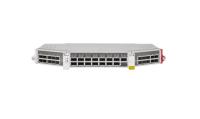Ciena is looking to grow its share in the metro routing market, unveiling a new WaveRouter product which could help bring a bit of much-needed simplicity to multi-cloud operating environments. CTO Steve Alexander told Silverlinings the key to it all is visibility across network layers.
When developing WaveRouter, Alexander said Ciena went to the drawing board with a clean sheet in hand. As a core principle, it decided to focus its design around the most basic communications element: photons. By doing so, it was able to come up with a product that enables visibility from Layer 0 all the way through Layer 3. That is, according to the OSI model, the physical, data link and network layers, as well as the bits, frames and packets that move across them.
The multi-cloud perspective
From a cloud perspective, that means operators and their customers can get a consistent view of their cloud connections, no matter who the cloud provider is or what kind of link is being used.
“A typical multi-cloud environment doesn’t necessarily mean every cloud gets the same thing,” Alexander explained.
“If you’re running an enterprise, odds are you’ve got dedicated connections of different types of services to those folks. You may have a direct wavelength to one or two of them. You may have dark fiber over to a data center that you’re running services over in addition to buying circuits from a service provider, in addition to buying internet service so you can get to anybody on the cloud,” he continued. “It’s the ability to see all those different types of services all at once which is what enables a good multi-cloud environment.”

Other key features of WaveRouter include scalability from 6 Tbps to 192 Tbps in 6 Tbps increments, a pay-as-you-grow power model, compatibility with both performance and pluggable optics ranging from 400G to 1.6T, and angled faceplates which allow the use of passive DAC cables.
Alexander said many of these features make WaveRouter idea for deployments in service providers’ central office environments, which are space and power constrained.
“Central offices more and more have to look and operate a little bit more like a data center, like an element of the cloud. But shoehorning in typical data center equipment doesn’t always work,” he said. “It breaks thermal loading, it can break outside plant requirements.”
In the metro routing market, Ciena is up against the likes of Cisco, Nokia, Huawei and Juniper Networks.
WaveRouter will be generally available starting in Q3 2023.